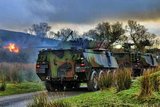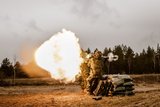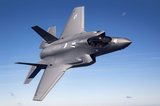North and South Korean soldiers enter each other's territory
Soldiers from North and South Korea crossed into each other's territory peacefully for the first time on 12 December, Seoul said, as they began checking the dismantlement of guard posts in the Demilitarised Zone.
The North invaded the South in 1950, triggering the Korean War, and Seoul went on to change hands four times as Pyongyang's Chinese-backed forces and the US-led UN troops supporting the South fought their way up and down the peninsula and back again.
The conflict ended in an armistice in 1953, leaving the two technically still in a state of war, but a rapid reconciliation has taken place this year.
The South's President Moon Jae-in and Kim Jong Un, leader of the nuclear-armed North, agreed to remove a limited number of guard posts along their heavily-fortified frontier at a September summit in Pyongyang, among other measures.
North Korea blew up ten of its facilities in November, while the South tore ten down on its own side using excavators.
South Korean inspectors visited each of the guard posts on the North's side on Wednesday to make sure they had been dismantled and all firearms and troops removed, Seoul's defence ministry said.
North Korean inspectors carried out the same process at the South's bunkers in the afternoon, it added.
Video footage showed armed South Korean soldiers shaking hands with North Korean personnel at the military demarcation line in the centre of the DMZ, before crossing to the other side.
Led by the North Koreans, the Southerners walked along a path where the North's guard posts had once stood, soldiers from both sides taking photos and filming the process as they chatted.
‘This marks the first time since the division that the soldiers of the North and South... are peacefully crossing the military demarcation line,’ the ministry said in a statement.
The North is known to have more guard posts - which include both surface structures and underground elements - and according to Yonhap news agency it now has around 150 in the DMZ, with the South having about 50.
Despite its name, the area around the DMZ is one of the most fortified places on earth, replete with minefields and barbed-wire fences.
But under the plans to ease tensions agreed in Pyongyang, the two Koreas have demilitarised the border truce village of Panmunjom, leaving it manned by 35 unarmed personnel from each side.
Officially called the Joint Security Area, the enclave is the only spot along the 155-mile frontier where soldiers from the two Koreas and the US-led UN Command stand face to face.
The dovish Moon has pursued a policy of engagement with the North, in increasing contrast to Washington, which insists pressure should be maintained on Pyongyang until it denuclearises.
More from Defence Notes
-
![Canada set to look away from its neighbour and across the Atlantic for partners]()
Canada set to look away from its neighbour and across the Atlantic for partners
While non-EU UK struggles to join the Security Action for Europe initiative, which provides loans for defence programmes, Canada has become the first country outside Europe to get access – and did so for a nominal fee.
-
![NATO experiments with solutions to integrate networks, AI and uncrewed systems]()
NATO experiments with solutions to integrate networks, AI and uncrewed systems
During the latest edition of the NATO DiBaX, the alliance tested multiple capabilities to inform requirements for future efforts.
-
![Leonardo unveils plans for Michelangelo air defence dome]()
Leonardo unveils plans for Michelangelo air defence dome
The new multi-layered defence system will harness AI to neutralise airborne threats and protect Europe from Russian aggression.























